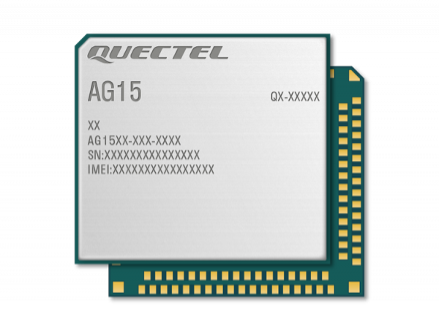C-V2X is progressing rapidly, is 5G really necessary?
C-V2X 5G
At the end of last year, the United States Federal Communications Commission formally allocated the 5.9GHz band 70MHz to Wi-Fi and C-V2X, completely abandoning DSRC, which also means that my country’s firmly developed C-V2X has become the international mainstream standard and has gained a global scale. Recognition. However, there seems to be a certain gap in the selection of 4G and 5G.
Communication options of C-V2X
C-V2X has two complementary communication modes, one is a short-distance PC5 direct connection, based on the 5.9GHz ITS frequency band (B47). PC5 is often used for communication between vehicles and between vehicles and roadside units (RSU), and supports V2X message broadcasting and rapid information exchange. The other is the long-distance communication between the car or RSU and the base station, Uu connection, this connection method still operates in the traditional commercial mobile frequency band.
As a wireless communication technology for vehicles based on cellular networks, the establishment and commercialization of C-V2X exist at a time node where 4G and 5G coexist. Many people believe that although the development speed of 5G exceeds expectations, it is necessary to realize networked vehicles. There is still a certain distance to the required coverage.
Not only that, but there are also infrastructure, standardization, and regulatory issues facing the popularization of 5G+C-V2X. There are very few countries in the world that can quickly achieve 5G coverage in a large area, and in the face of car-regulated C-V2X, the product planning cycle is long, so LTE C-V2X modules in many regions are still the first choice.
However, in order to do a good job in the future layout planning of car access to the Internet of Everything, many people still have their eyes on 5G first. The end-to-end transmission delay of 5G is only 1ms, and reliability can be improved by limiting data packet loss. In the 5G R16 specification, the C-V2X function under 5G is further strengthened. It is precisely because of the "hard" advantages of 5G networks that 5G+C-V2X modules have appeared frequently on the market.
Quectel

AG15 / Quectel
Quectel launched the AG15 series C-V2X module as early as 2018. The module is based on Qualcomm's 9150 chip and meets the requirements of the IATF 16949:2016 vehicle regulations. Qualcomm 9150 is also the most commonly used C-V2X chip on the market, based on the 14nm process, using Arm Cortex A7 as the CPU core. The chip is also part of Qualcomm's C-V2X development platform and is compatible with 4G/5G networks.
For 5G+C-V2X, Quectel launched the AG55xQ series of modules. This series of modules are all automotive-grade 5G NR Sub-6GHz modules, which support independent networking (SA) and non-independent networking (NSA) modes. AG55xQ is based on Qualcomm's SA515M chip, which can achieve 2.4Gbps downstream speed and 550Mbps upstream speed in NSA mode.
AG55xQ can also choose C-V2X PC mode 4 direct communication, even in areas without 5G coverage, it can also be backward compatible with GSM and LTE networks to realize connections in remote areas. Quectel said that the AG55xQ series modules have been selected by SAIC-GM, NIO and Ideal, and it is expected to launch mass-produced models equipped with this series of modules from 2021 to 2022.
Alian Technology
At the end of April this year, Ailian Technology's 5G+C-V2X module AI-NX10 was successfully rolled off the line in Mianyang, Sichuan. This is also the world's first 5G+C-V2X module that supports PC5 communication in a non-GNSS scenario. It is understood that this module is based on HiSilicon’s HiB5000V, covering the domestic 3G, 4G and 5G frequency bands, and also supports LTE-V2X PC5 direct communication.

AI-NX10 / Ailian Technology
AI-NX10 can achieve a maximum uplink rate of 1.2Gbps and a maximum downlink rate of 4.6 Gbps. It is a wireless communication solution designed specifically for IoV applications. At the same time, the module will be the first to be used in RSU equipment such as roadside cameras and road test smart stations to speed up the construction of smart transportation projects such as vehicle-road collaboration and intelligent networking.
Guanghetong

AX168-GL / Fibocom
AX168-GL is a C-V2X module launched by Fibocom for the global automotive market. It not only meets the AEC-Q200 Grade 2 standard, but also passed the “four-span” (cross-chip module) of the China Academy of Information and Communications Technology. , Cross-terminal, cross-security platform, cross-map business) consistency test. It integrates the CRATON2 chipset and security CAN MCU of the Israeli company Autotalks.

CRATON2 / Autotalks
CRATON2 is the second-generation V2X chipset of Autotalks. It is designed for autonomous driving and connected cars. It integrates a modem that supports DSRC and C-V2X PC5 direct communication, ultra-low latency V2X hardware security module (eHSM) and powerful Wire-speed message verification hardware acceleration engine. In addition to C-V2X, CRATON2 also supports IEEE 802.11a/b/g/n/ac, which can enable vehicle external Wi-Fi to achieve value-added services, and supports a transmission rate of up to 433Mbps.




